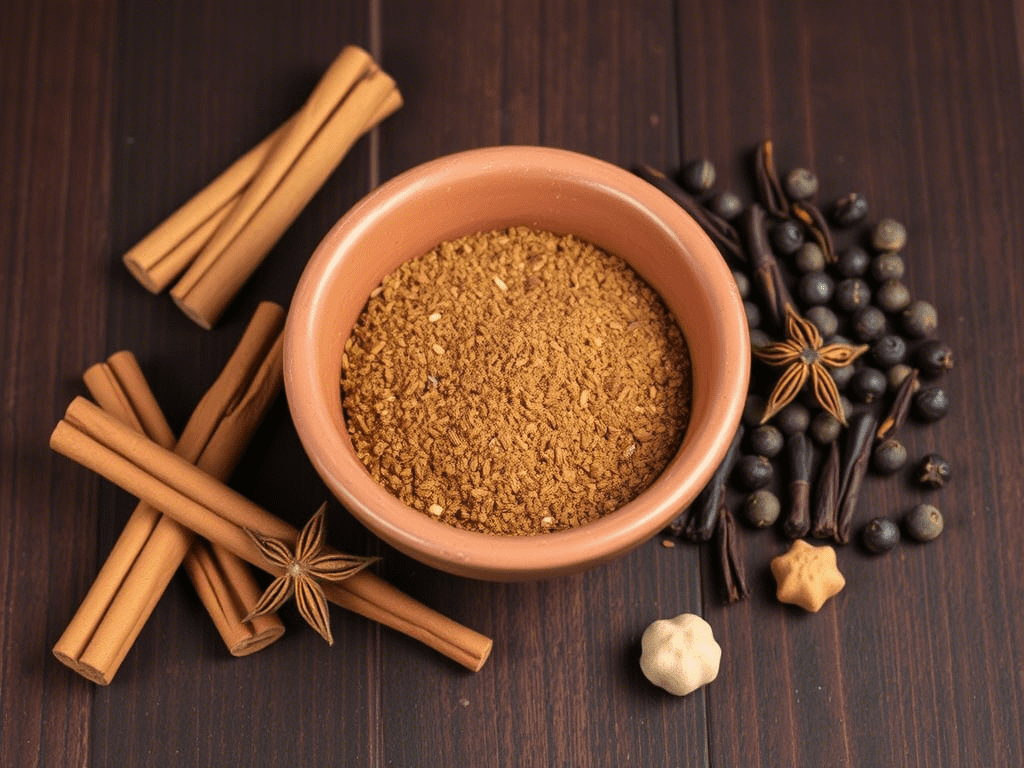7 Spice: The Irresistible Lebanese Blend That Transforms Everyday Meals
If you’ve ever wondered why Middle Eastern dishes have such deep, aromatic flavors, the answer often lies in a single spice blend: 7 spice. Known as Lebanese 7 spice, this earthy and complex mixture is a staple in kitchens from Beirut to Baghdad.
It’s not just a seasoning — it’s the soul of many dishes like kibbeh, kofta, and spiced rice. While you’ll find dozens of spice blends around the world, 7 spice holds a unique place in Levantine cooking, blending warm, sweet, and slightly smoky notes that elevate any meal.
But what is seven spice, really? And how do you make it at home with authentic flavor?
Let’s dive in.
Table of Contents
What Is 7 Spice?
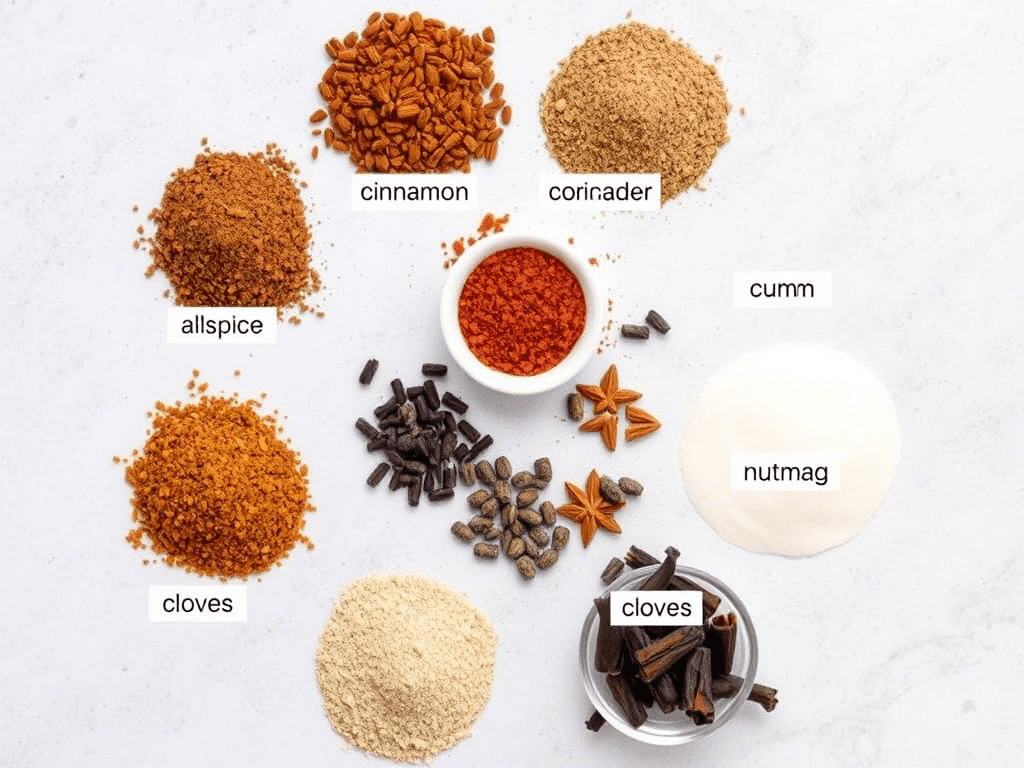
At its core, 7 spice (also known as sabaa baharat in Arabic) is a traditional Lebanese spice blend that brings together seven fragrant, ground spices to create one bold, balanced mix.
Despite the name, the actual number of spices can vary depending on the region or the cook. Some versions use six, others even sneak in an eighth — but seven remains the classic.
🌍 Origin & History
Lebanese 7 spice is part of a broader tradition of Arabic spice blends, but what sets it apart is its simplicity and versatility. While Indian masalas might include dozens of ingredients, 7 spice focuses on balance — not heat.
It’s widely used across:
- Lebanon
- Syria
- Palestine
- Parts of Iraq and Jordan
🧪 Typical Ingredients (Varies Slightly by Region)
- Ground cinnamon
- Allspice
- Ground cloves
- Nutmeg
- Black pepper
- Ground coriander
- Ground cumin
Some blends swap out coriander for cardamom or add paprika for a hint of color.
Lebanese 7 Spice vs Other Blends
While 7 spice is a beloved staple in Lebanese kitchens, it’s often confused with other popular blends from the Middle East and beyond. Let’s clear that up.
Understanding the difference between Lebanese 7 spice and other spice mixes like Baharat or Garam Masala will help you choose the right one for the dish you’re making — and avoid overpowering your flavors.
🥄 What Makes Lebanese 7 Spice Unique?
The Lebanese 7 spice blend is known for its warm, aromatic balance — with no single spice dominating the mix. It’s used for everything from meats and rice to soups and stews.
What sets it apart?
- Mild complexity: it doesn’t burn or sting — it hugs your palate.
- Sweet warmth: spices like cinnamon, nutmeg, and allspice give it a sweet aroma.
- Savory depth: cumin and black pepper add that base-note umami.
🔁 How It Compares to Other Blends
| Spice Blend | Flavor Profile | Main Use Cases |
|---|---|---|
| Lebanese 7 Spice | Warm, sweet-savory, balanced | Kofta, rice, kibbeh, meat stews |
| Baharat | Spicier, deeper, slightly smoky | Heavier meat dishes, grilled lamb |
| Garam Masala | Pungent, bold, often spicy | Indian curries, dals, vegetable dishes |
✅ While Baharat is also used in Lebanese cooking, it’s generally stronger and more pepper-forward.
✅ Garam Masala, by contrast, is more pungent and can overpower delicate Middle Eastern dishes.
🧠 Pro Tip:
If a recipe calls for 7 spice and you use Baharat instead — your dish might end up more aggressive than intended.
Stick with lebanese 7 spice when cooking dishes like kibbeh, mujaddara, or Arabic spiced rice.
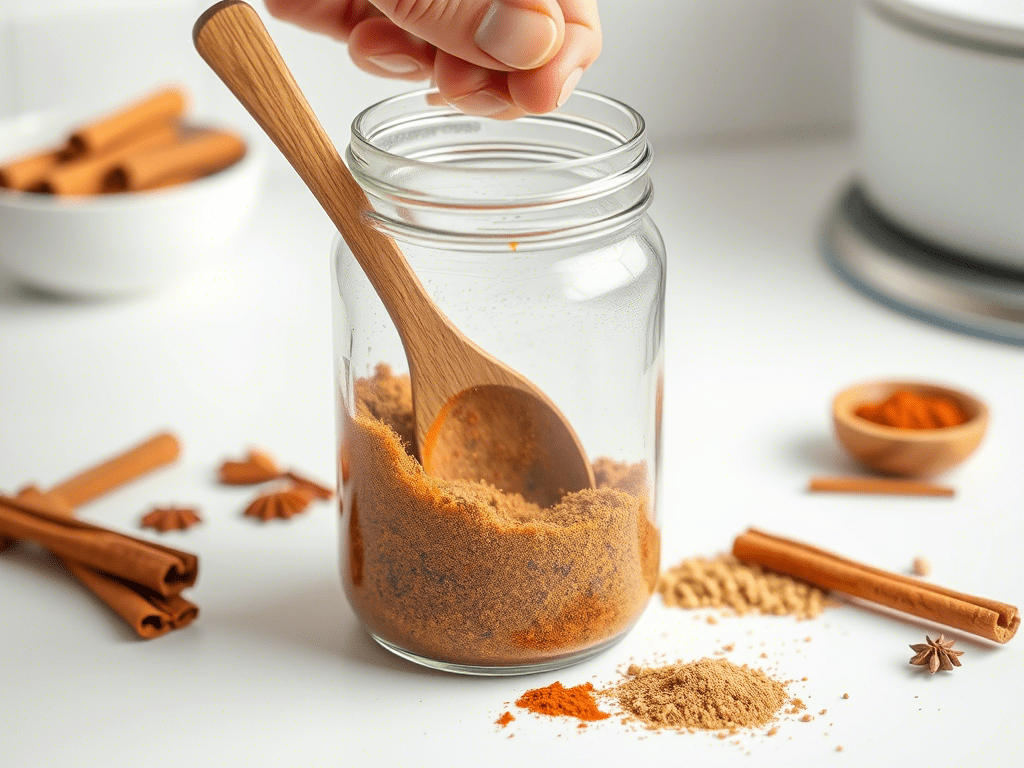
7 Spice Recipe (Make It at Home)
Ready to bring bold Lebanese flavor into your kitchen? Making your own 7 spice blend at home is easier than you think — and the best part? You get to control the freshness and the balance.
Here’s a simple and traditional Lebanese 7 spice recipe to get you started.
🛒 Ingredients
You’ll need the following ground spices:
- 2 tablespoons ground allspice
- 1 tablespoon ground black pepper
- 1 tablespoon ground cinnamon
- 1 tablespoon ground cloves
- 1 tablespoon ground cumin
- 1 tablespoon ground coriander
- 1 tablespoon ground nutmeg
📝 Optional swap: You can replace coriander with cardamom for a slightly sweeter, floral note.
🌀 Instructions
- Combine all the spices in a small bowl or spice jar.
- Mix well with a spoon or shake the jar until fully blended.
- Store in an airtight container, away from heat and sunlight.
⏳ Shelf life: 4–6 months for best flavor.
🧠 Pro Tip:
Use whole spices and grind them fresh for even more aromatic punch.
Want to take it to the next level?
For the freshest flavor, grind whole spices using a tool like this high-end spice grinder — ideal for serious home cooks.
How to Use It in Everyday Cooking
This blend is one of those game-changing seasonings that transforms the ordinary into the unforgettable. Whether you’re cooking a weeknight dinner or hosting a cozy weekend gathering, it slips into your meals and adds that can’t-put-your-finger-on-it depth.
Here’s how to integrate it like a pro:
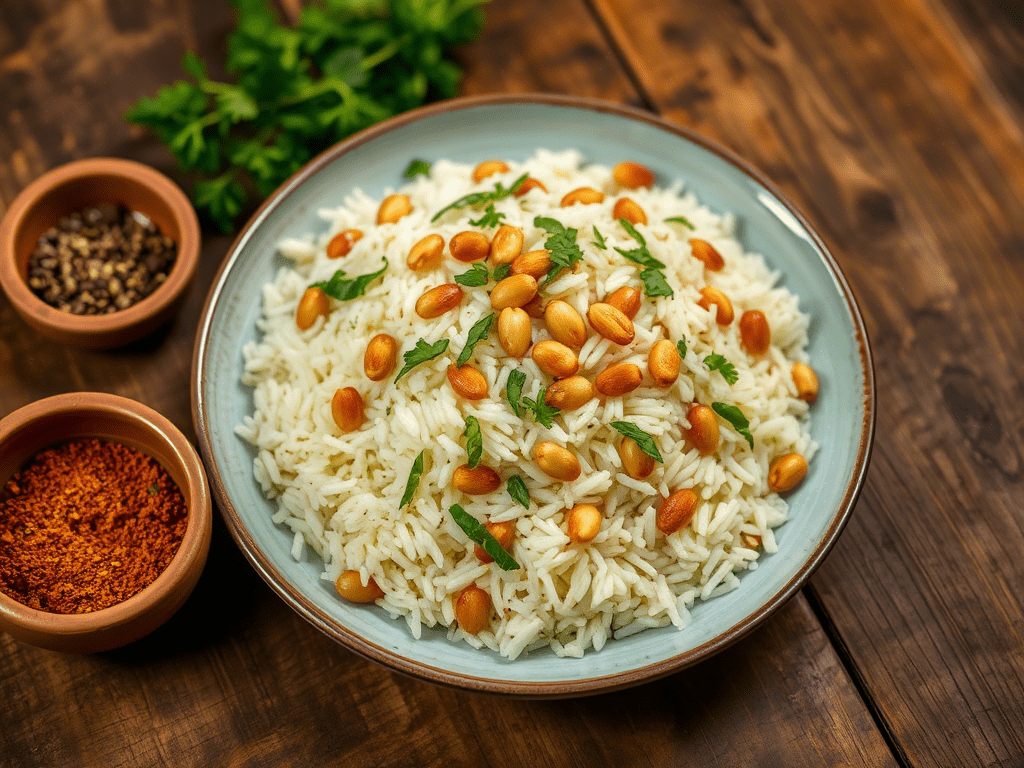
🥩 1. Spice Rub for Meats
Mix 1 tablespoon of the blend with:
- 2 tablespoons olive oil
- 1 teaspoon crushed garlic
- Juice of half a lemon
Rub it on:
- Chicken thighs for roasting
- Ground lamb for meatballs
- Ribeye steak before pan-searing
- Or even turkey breasts for a Middle Eastern twist on holiday meals
💡 Tip: Let the meat rest with the marinade for at least 1 hour (or overnight) to absorb all the flavor.
🍚 2. Aromatic Rice Enhancer
In your next batch of basmati or jasmine rice:
- Add ½ to 1 teaspoon of the spice to the water or broth
- Fry it first in a tablespoon of butter or ghee with vermicelli before adding the rice for maximum aroma
Try it with:
- Lentil rice (mujaddara)
- Spiced rice pilaf with pine nuts
- Stuffed grape leaves or cabbage
💡 Twist: Mix the blend into plain yogurt and drizzle it over the rice for a tangy, spiced topping.
🥣 3. Heartwarming Soups & Lentil Dishes
This spice does wonders for:
- Red lentil soup with carrots
- Chickpea and spinach stew
- Roasted butternut squash soup
- Tomato-based bean soups
Just ½ teaspoon added during simmering can bring a flat soup to life without overpowering other spices like cumin or coriander.
🧆 4. Vegetarian Power
Use it in:
- Falafel mix
- Roasted cauliflower
- Eggplant stews
- Quinoa bowls
Add it while roasting veggies with olive oil, or toss it into your grain bowls for a punch of warmth.
💡 Tip: Combine it with tahini and lemon to make a smoky, savory salad dressing.
🍳 5. Unexpected: Breakfast!
Yes, seriously — try this:
- Scrambled eggs with feta and fresh herbs, sprinkled with a pinch of the blend
- Omelets with mushrooms and spinach
- Shakshuka sauce base for poached eggs
It creates a rich morning flavor profile that pairs beautifully with toasted pita or sourdough.
👨🍳 Chef’s Insight: This blend works best when heated — sauté it lightly in oil or butter before adding liquids. That’s how you unlock its full potential.
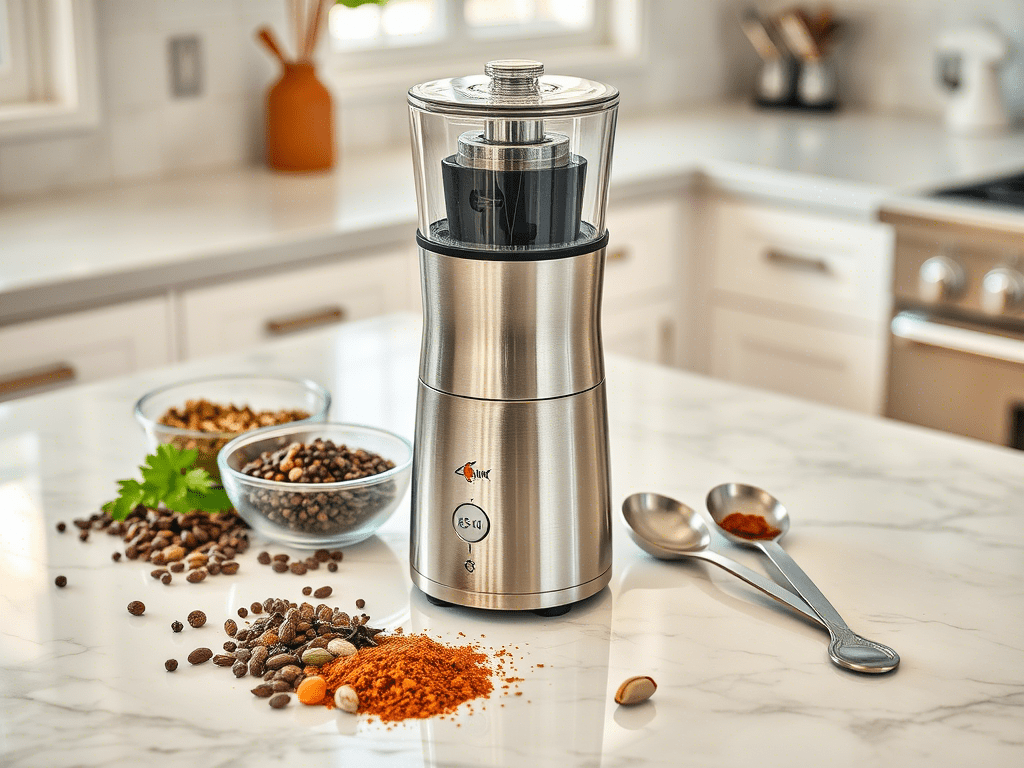
Bonus Section: Where to Buy the Real Blend (and Take It Up a Notch)
Sure, you can mix your own at home — and honestly, you should at least once. But if you’re short on time or want to try an authentic, pre-made version, there are excellent options available from trusted Middle Eastern brands.
Some spice shops in cities like Beirut, Dubai, or even online marketplaces carry Lebanese 7 spice blends made from freshly ground ingredients and family recipes passed down for generations.
🧃 Where to Look:
- Middle Eastern grocery stores (ask for “sabaa baharat”)
- Specialty food markets with a Mediterranean section
- Online from spice merchants like Ziyad, Al Wadi, or Spice House
- Amazon (some verified sellers offer small-batch blends shipped worldwide)
💼 Want to Upgrade Your Spice Game?
If you’re diving deeper into homemade spice blends, consider investing in a professional spice mill. It’s not your basic kitchen grinder — this is next-level precision.
If you’re serious about grinding whole spices for your 7 spice blend, check out this commercial-grade spice grinder on Amazon. It’s a serious tool for serious flavor.
👃 Pro Tip:
Buying whole spices and grinding them fresh can drastically improve the depth and aroma of your blend — no matter the recipe.
Final Thoughts: Spice Like a Pro
Sometimes, the biggest flavors come from the smallest ingredients — and this timeless Middle Eastern blend proves exactly that. Whether you make your own or buy a ready-made version, incorporating this spice into your kitchen is an easy upgrade with rich rewards.
From stews to rice, grilled meats to vegetables, a pinch of this mix can transform your meals from simple to soulful.
So what are you waiting for?
💬 Tell Us What You Think:
- Have you tried making your own blend before?
- What’s your go-to dish to use it in?
- Do you prefer it homemade or store-bought?
👇 Drop your thoughts in the comments.
💡 And if you’re into bold Middle Eastern flavors, you’ll love our Dubai chocolate strawberries recipe — a luxurious dessert that pairs beautifully with spiced meals.
Because good food deserves good flavor — and good flavor starts with a bold blend.

